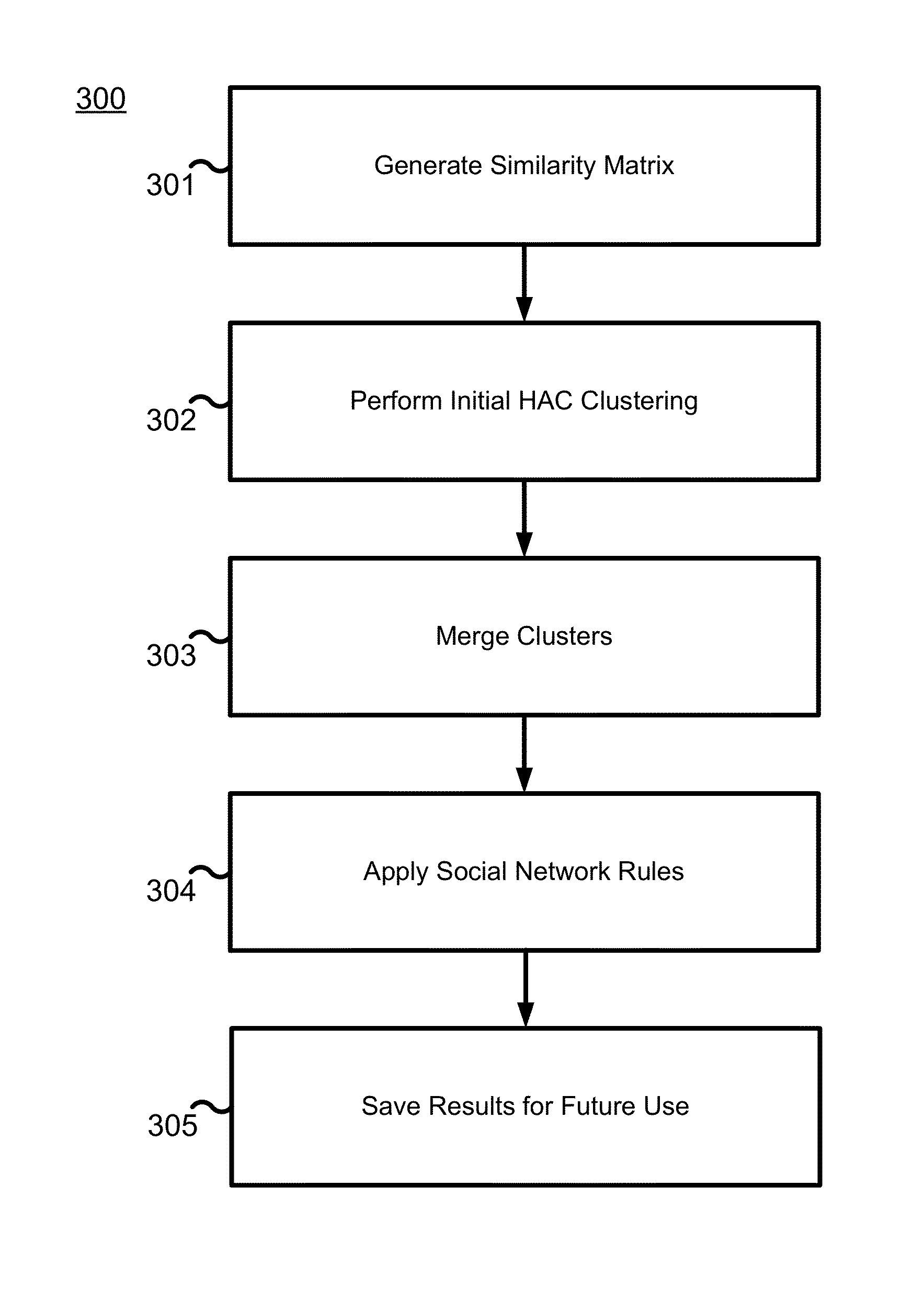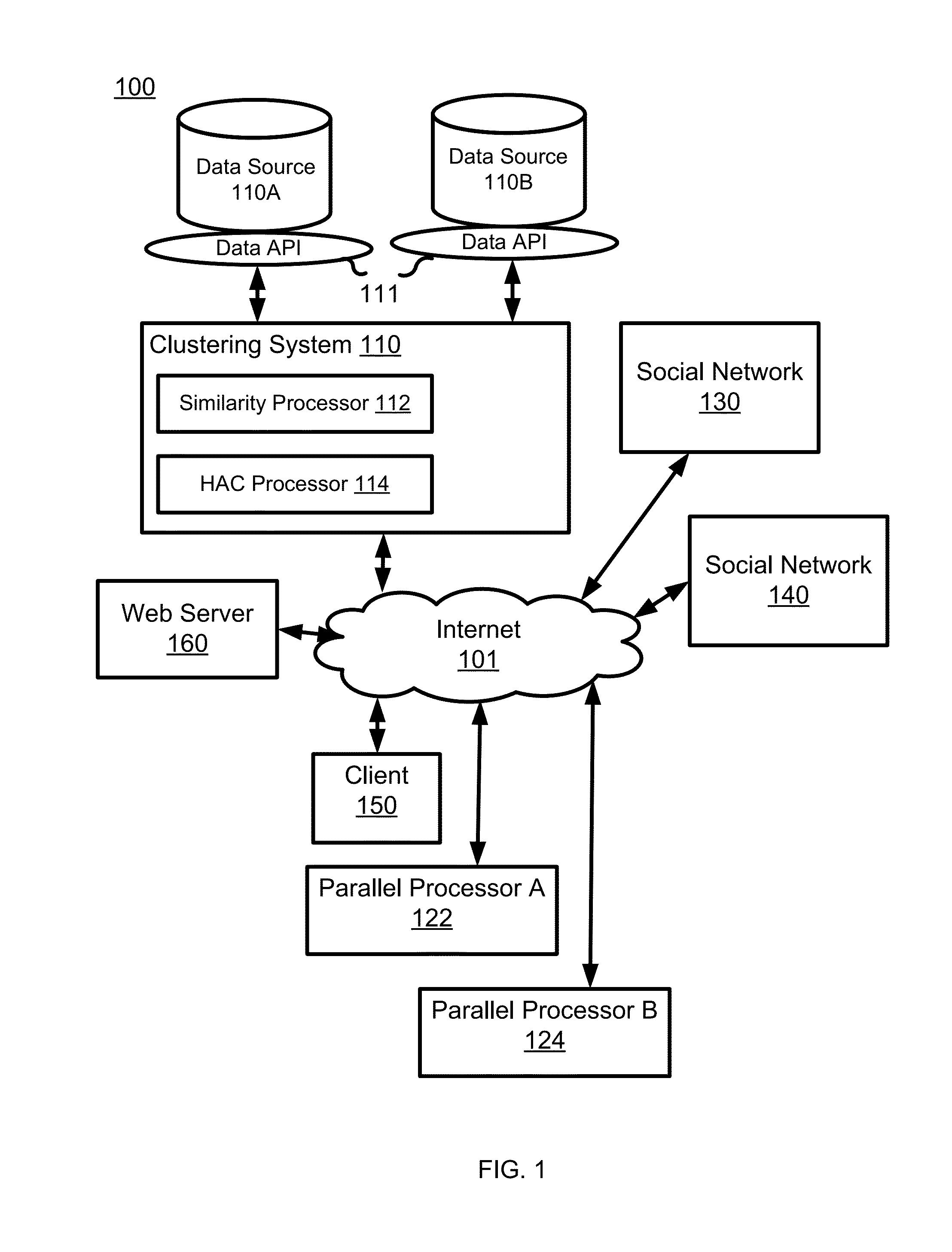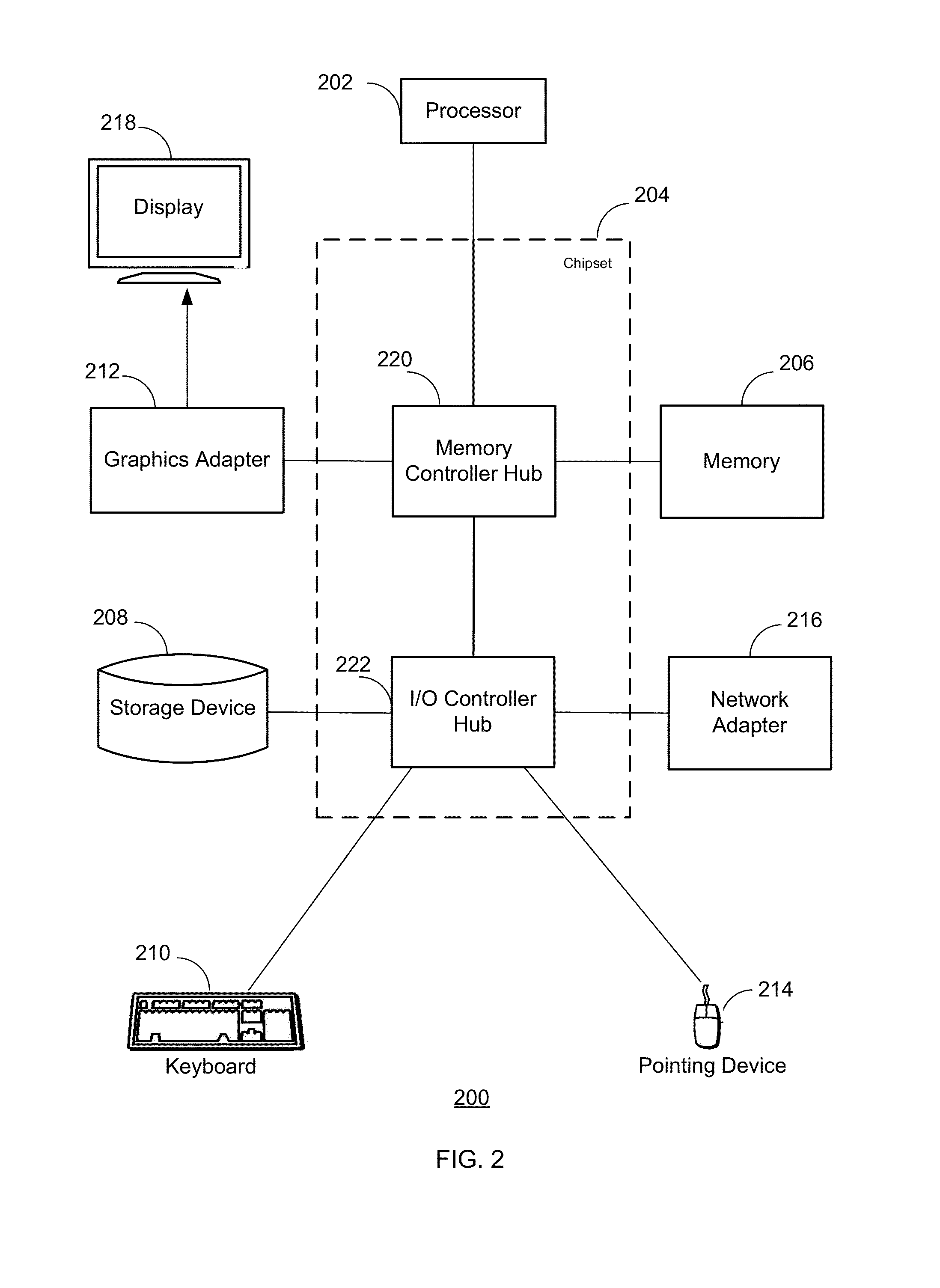Social network node clustering system and method
a social network and node clustering technology, applied in relational databases, instruments, data processing applications, etc., can solve the problems of large processor overhead, difficult to determine neighbors on social graphs, and inability to meet the needs of social graphs, and achieve strong efficiency and reduce processing complexity.
- Summary
- Abstract
- Description
- Claims
- Application Information
AI Technical Summary
Benefits of technology
Problems solved by technology
Method used
Image
Examples
Embodiment Construction
System Overview
[0020]Embodiments of the present invention provide systems, methods, and computer-readable storage media for identifying near neighbors or nodes, or users, in social network facilities and other modes of electronic communication. Just as in human physical interaction, users of social networks and other forms of electronic communication often wish to take certain actions, such as sharing information, with only certain groups of people having a particular relationship with them, but not others. A person may wish to share one news story only with office colleagues, for instance, while sharing another news story only with old college friends. With large social networks having many millions of nodes, it can be extremely processor-intensive to identify all of a user's groups of interest, even when those are selected from only the near neighbors in a social network.
[0021]FIG. 1 is an illustration of a computing environment 100 in accordance with one embodiment of the inventi...
PUM
 Login to View More
Login to View More Abstract
Description
Claims
Application Information
 Login to View More
Login to View More - R&D
- Intellectual Property
- Life Sciences
- Materials
- Tech Scout
- Unparalleled Data Quality
- Higher Quality Content
- 60% Fewer Hallucinations
Browse by: Latest US Patents, China's latest patents, Technical Efficacy Thesaurus, Application Domain, Technology Topic, Popular Technical Reports.
© 2025 PatSnap. All rights reserved.Legal|Privacy policy|Modern Slavery Act Transparency Statement|Sitemap|About US| Contact US: help@patsnap.com



